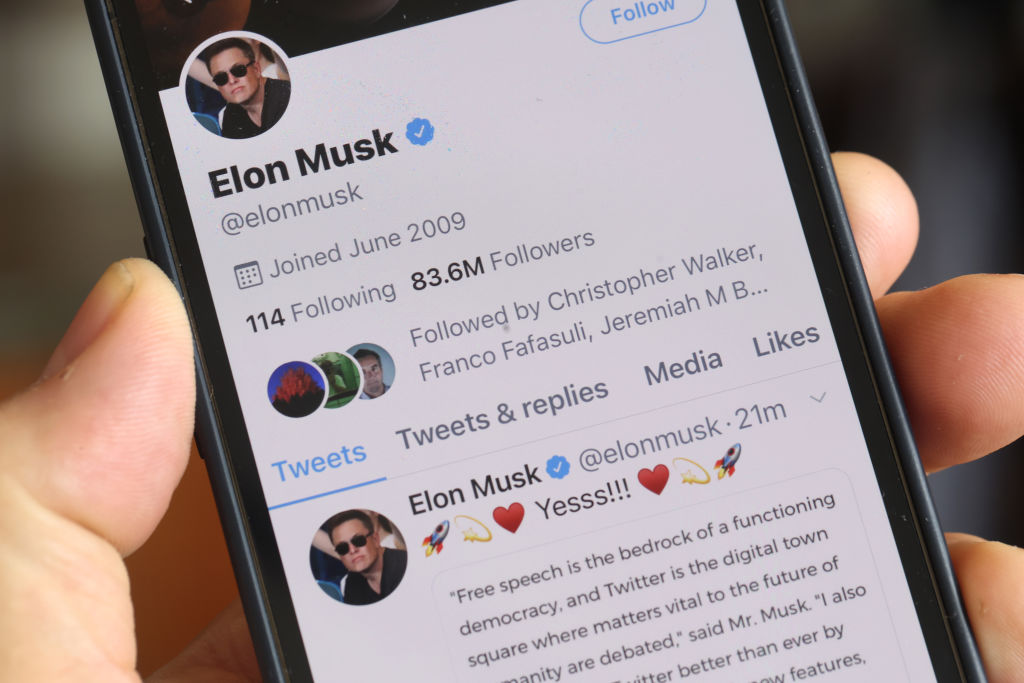Musk’s paid for verification is a joke fit for April Fool’s day as it commodotizes security

Over the weekend, Elon Musk’s Twitter started scrapping blue ticks – unless you paid for them. The changes also mean if you want security, you have to pay. Asad Moghal writes.
William Shatner and Monica Lewinsky are not two people you would automatically place together, but surprisingly Twitter’s new approach to verification has united the two on a single cause.
On April 1 Twitter tweaked its verification system – a fitting date for all the hoaxes and practical jokes that many believe this move will unearth. Twitter has combined legacy verification with its Twitter Blue subscription model, with the platform hoping users will be unable to tell the difference. Will this open up a Pandora’s Box of fake accounts, fake posts, and fake news? Twitter certainly hopes not. The platform has introduced eligibility criteria for its Twitter Blue programme, which include adhering to non-deceptive behaviours, for example your account must display “no signs of being misleading or deceptive”.
This probably won’t offer respite, despite Twitter’s best efforts.
Already, in recent months, many users have found Twitter’s ability to tackle trolling and abusive behaviour – hardly in sparkling form before – has deteriorated. Some have linked this to the mass lay-offs at the social media giant. Without the resources to deal with this, how on earth would they screen Twitter Blue users for deceptive accounts?
Users concerns over Twitter Blue were heightened by Musk making SMS two-factor authentication only available to those paying for the service. In other words, if you pay, you can keep your account secure.
This only adds an extra layer of fear. Not only will those who are at risk of being mimicked by others be more vulnerable – for example, when it was first launched, fake Tony Blair and George Bush accounts, both with blue ticks, were joking about war in Iraq – but they may also be prevented from protecting their real account.
The gold checkmark programme, a verification process specifically for businesses and organisations like news outlets, was only made necessary by the “democratisation” of Twitter Musk has billed the subscription service as.
There is currently a waitlist for the programme, and with a reported price tag of $1,000 per month, it’s a hefty investment. But not all companies will have the desire, or the funds, to spend thousands of dollars a year on simply verifying their status. Especially when other platforms offer it for free.
The commercialisation of social media verification is not unique to Twitter. Meta recently launched its Meta Verified programme, a paid-for subscription service allowing Facebook and Instagram users to pay for blue checkmarks. The monthly bundle includes proactive account monitoring to guard against impersonators, as well as increased reach in search, comments, and the Explore Page. Unlike Twitter Blue, it requires checks against a government issued form of identification. Its purpose is not about taking away the “status” of a blue tick, as Musk has made his about, but about preventing impersonation and abuse.
In Musk’s case, the “deceptive behaviour” rule is a corollary, rather than a driving force.
Social media companies have had their revenues dented by a fall in ad spend, and the paid-for subscription services are an attempt to diversify income streams. It’s a symptom of the woes in Silicon Valley.
In the scale of social media scandals, paid-for verification will likely amount to no more than an amusing anecdote; certainly, since Twitter Blue’s launch, those paying for the service have been victims of ridicule.
Twitter is on a journey to redefine itself, and we’re all along for the ride.